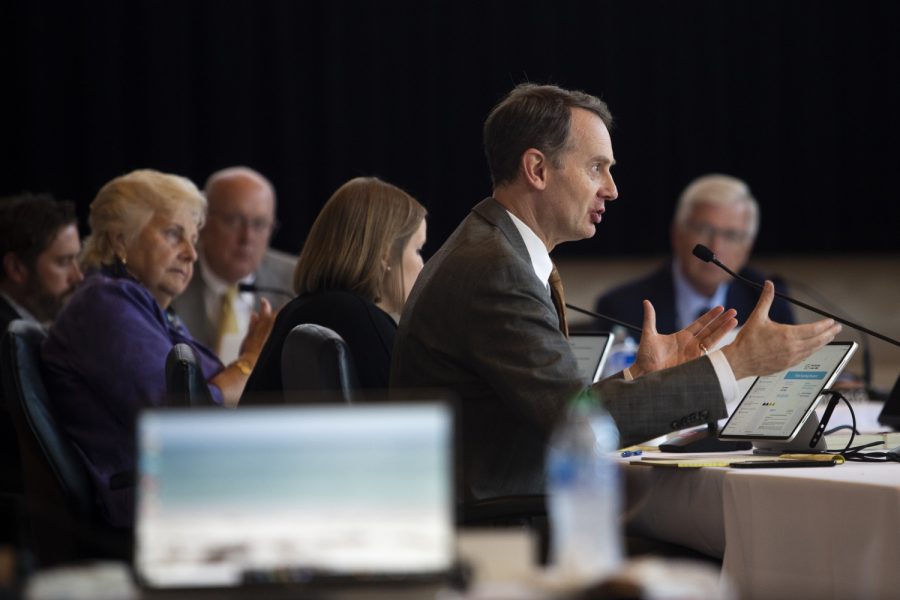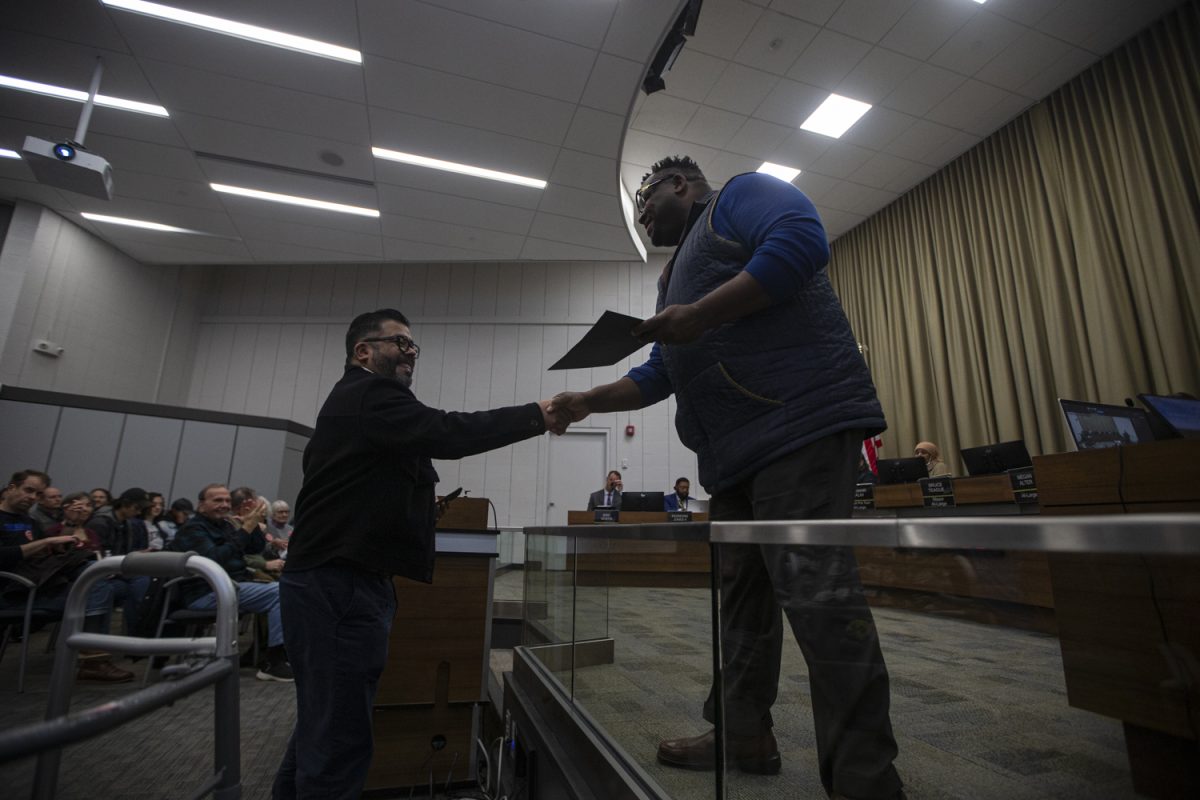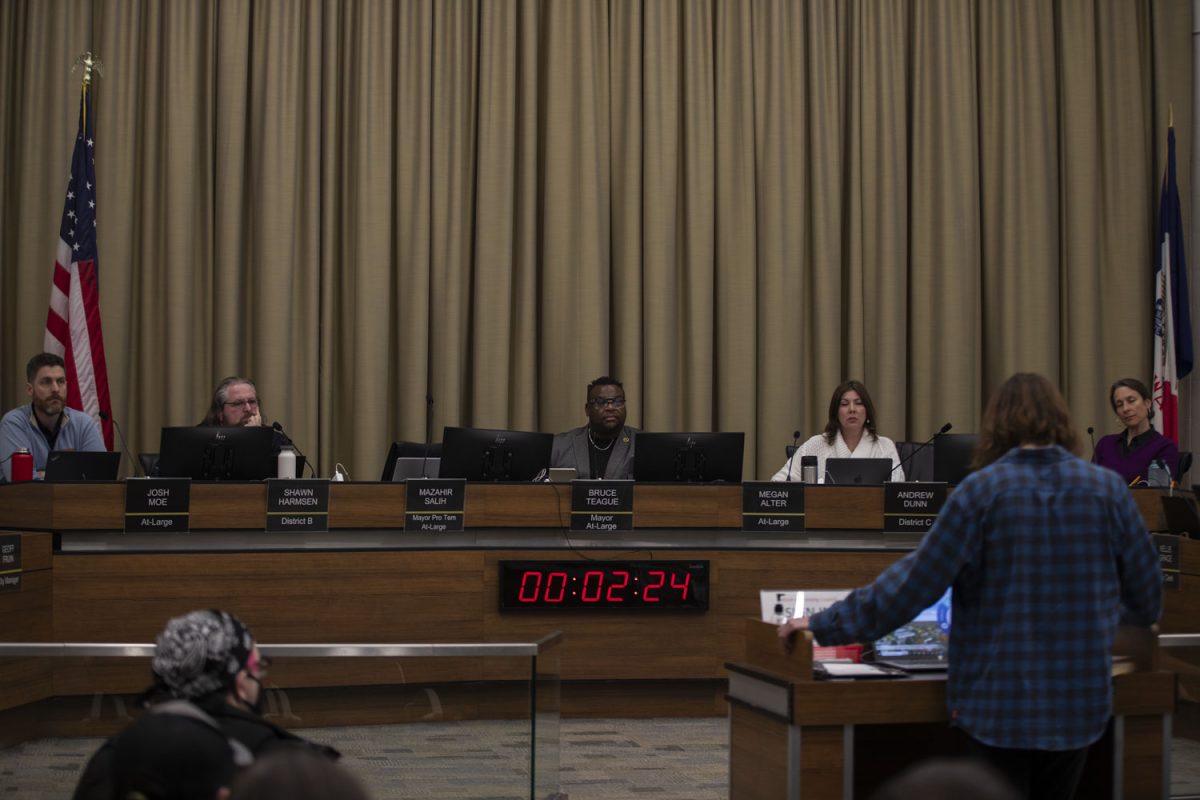Sporting a crisp gray suit and tie, Karim Abdel-Malek- could be mistaken for a bank executive, perhaps a lawyer.
The clothes might be fitting. The director of the University of Iowa Center for Computer-Aided Design has a particular way of running his program — like a business.
Housed at the UI Engineering Research Facility, the center has adopted his emphasis on professionalism and results. Since taking the reins as director in 2005, he has restructured the program into six specialized units and increased the number of staff members from 27 to 150.
“[I brought] the professional aspect of research, I think,” said Abdel-Malek, noting that two of his hirings were a financial administrator and a business developer.
His center has secured contracts with the U.S. military, major companies — Chrysler, General Motors, Ford — and the defense agencies of Germany and South Korea. Next week, he’ll meet with NASA in Houston to develop a virtual astronaut.
For a research institution, these deals mean one thing: money.
“I think the money is — although it’s not the most important issue — a huge issue,” Abdel-Malek said.
Working at Utility Technologies International Corp. after getting a Ph.D. in mechanical engineering from the University of Pennsylvania, he learned essential skills about enterprise and applied them to the research center.
“The critics that say that I’m running it as more of a business, they have a point,” he said matter of factly. “I really want them to know I don’t care.”
The center brings in an average of $12 million a year, up from about $2 million a year before 2005, Abdel-Malek said. The center’s Virtual Soldier Research Program alone has brought in $25.5 million in the last five years, he said. The program tests military equipment and weapons in computer simulations.
As a researcher, Abdel-Malek found himself struggling to focus on a single project.
“I had ideas all over,” he said. “I didn’t pursue one single thing until I was able to apply the robotics that I learned to create human motion.”
Abdel-Malek’s breakthrough was Santos, a model designed to emulate human motion in the virtual world.
The project began six years ago after he received $3 million from the U.S. military to develop the virtual human.
Since its inception, Santos has seen many applications. For example, a researcher can virtually equip the model with a helmet to evaluate how it fits, how well he can see through the visor, and if the design is creating any stress on him.
Santos can also be used to test weapons, clothing, and heavy machinery. Automakers are using the virtual human to assess the safety of their assembly manufacturing processes.
Steve Beck, a research and development projects manager, described his boss’s mentality.
“He has a very clear vision of where he wants this technology to go,” Beck said. “[For him] if there’s not a vision that allows it to move forward, then it’s almost not worth doing.”
Although Abdel-Malek finds himself slightly removed from the development process in his current post, he still remains a presence.
John Looft, a UI undergraduate majoring in biomedical engineering, said Abdel-Malek is the adviser on his senior design project — a lightweight and inexpensive prosthetic hand.
“His input is very important to what we do,” Looft said. “He puts you on the right path, and he lets us as engineers, then, be able to use our creativity.”
Despite his success as director, Abdel-Malek said he is not yet satisfied with his accomplishments.
“Fulfilled? No. Never.”






